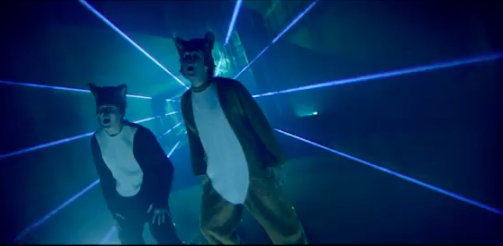
News
Summers Will Not Finish Semester of Teaching as Harvard Investigates Epstein Ties

News
Harvard College Students Report Favoring Divestment from Israel in HUA Survey

News
‘He Should Resign’: Harvard Undergrads Take Hard Line Against Summers Over Epstein Scandal

News
Harvard To Launch New Investigation Into Epstein’s Ties to Summers, Other University Affiliates

News
Harvard Students To Vote on Divestment From Israel in Inaugural HUA Election Survey
The DNA Behind Viral Videos

Just like a new breed of influenza hits us every year with coughs, sneezes and a runny nose, at least one music video goes “viral” around the world, infecting millions. Within weeks, or even days, the video takes over every facet of our lives: it pops up on our Facebook feeds, on the radio, and at parties, and then it replicates in the form of parodies.
The current strain of viral videos may have originated from the “Numa Numa” craze in 2004, when YouTube’s potential was just being realized. Last year’s most potent mutation came in the form of Psy’s "Gangnam Style," which now has almost 1.8 billion views on YouTube. The video’s dance moves were so contagious that even President Obama was caught trying them out. This year’s strain seems to be Norwegian comedy duo Ylvis’s “The Fox.” This bizarre hit about the mysterious furry creature seems to be reminiscent of past viral videos in its wacky dance moves and slick production.
Is there a formula for these immensely popular clips? We examined the epidemiology of viral videos and found some telling trends.
Electronica
Now more than ever, electronica is becoming immensely popular in the music industry. Electronic dance music artists such as David Guetta and Daft Punk have been hugely successful, and artists of other genres, like Kanye West, Rihanna, and Jay-Z, have begun to incorporate EDM-inspired synthesizers and beats into their music. So it comes as no surprise that these viral videos have aspects of electronica as well. Constant pulses of the music, coupled with catchy lyrics, are hallmarks of these videos.
Unsexy Dance Moves
What separates the choreographed dance moves of “Gangnam Style” and “The Fox” from those of Rihanna? The answer is simple: the dance moves from the first two are not even remotely sexual. Psy’s infamous move quite literally mimics a galloping horse. The dancers in “The Fox” just move around their arms in a zigzag pattern and bop their heads up and down. Sexy? Not so much. But you’ll still see people at parties with all these synchronized dance moves memorized.
Silliness
One of the most endearing parts about these videos is that they don’t take themselves too seriously. "Gangnam Style" pokes fun at pretentiousness: at one point in the video, Psy raps in a serious tone in a small space, only for the camera to zoom out and reveal that he’s sitting on a toilet. Meanwhile, “The Fox” is an outright goofy video. Dressed in animal costumes, people attempt to find what sound a fox makes—a light-hearted question that apparently intrigues the world.
Ambiguously Satirical
However, these videos aren’t just about fun. Behind the ludicrous content of “Gangnam Style” is a subtle jab at current social affairs in Psy’s country. Gangnam is a district in Korea that is widely known as the Upper East Side of Seoul: ritzy and pretentious. By fusing the name Gangnam with a nonsensical narrative, Psy critiques a cultural phenomenon prevalent in Seoul. The duo Ylvis were picked up by high-powered producers Stargate, yet some say they ruined this precious chance to rise in the musical world by creating a song about a fox’s sound. Just like the songs of comedy trio the Lonely Island, “The Fox” uses both silly lyrics and expert production to parody pop music trends.
Want to keep up with breaking news? Subscribe to our email newsletter.
